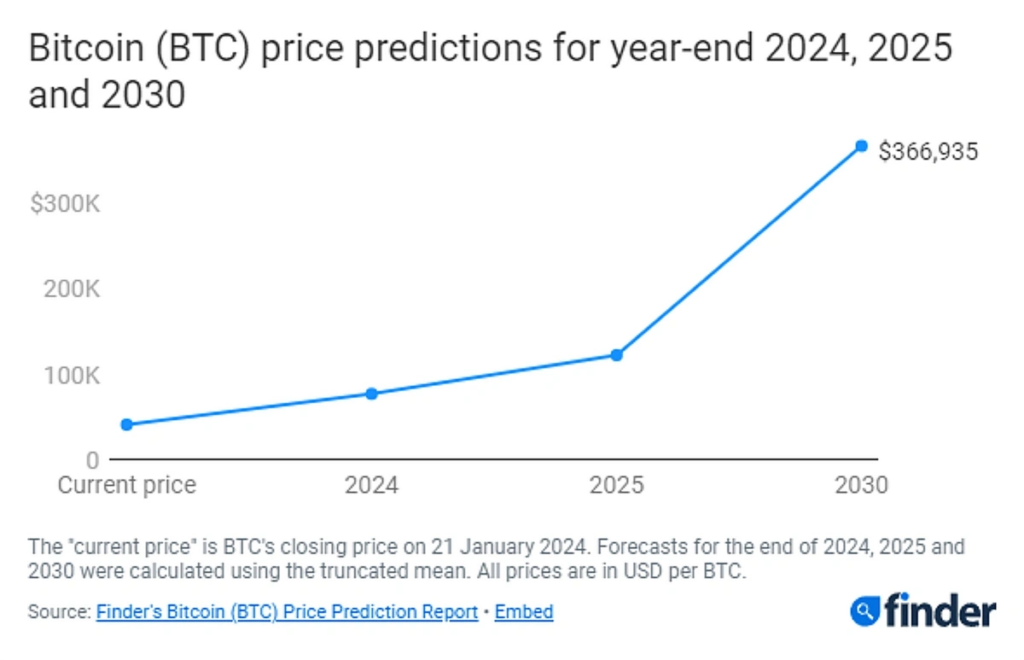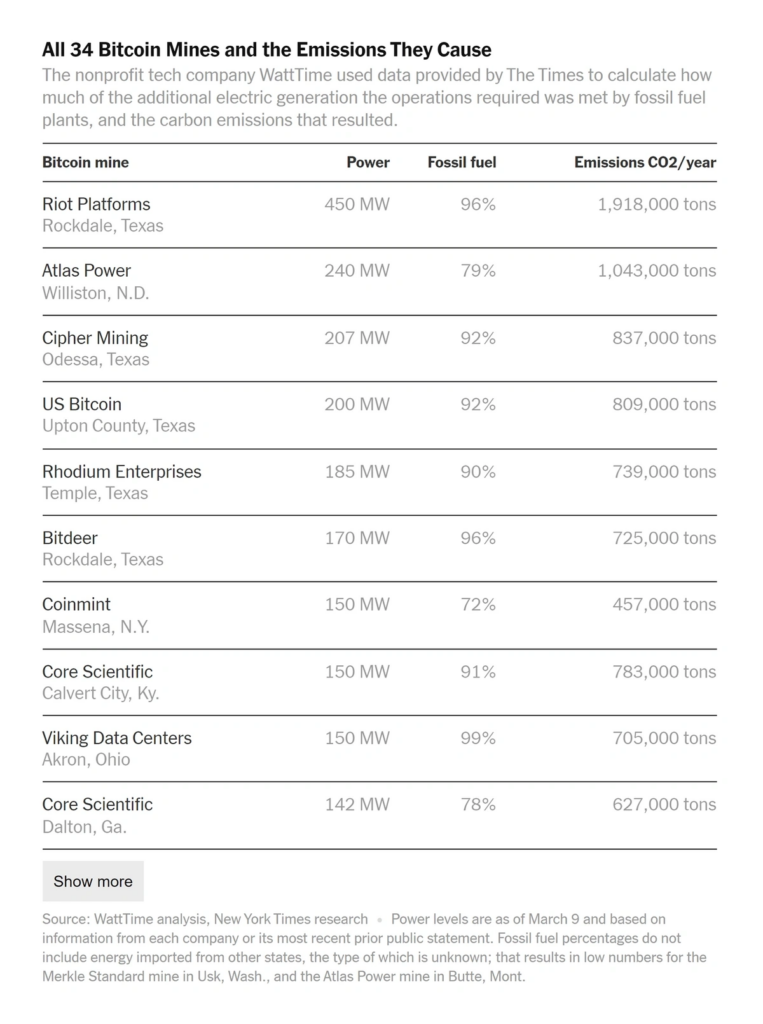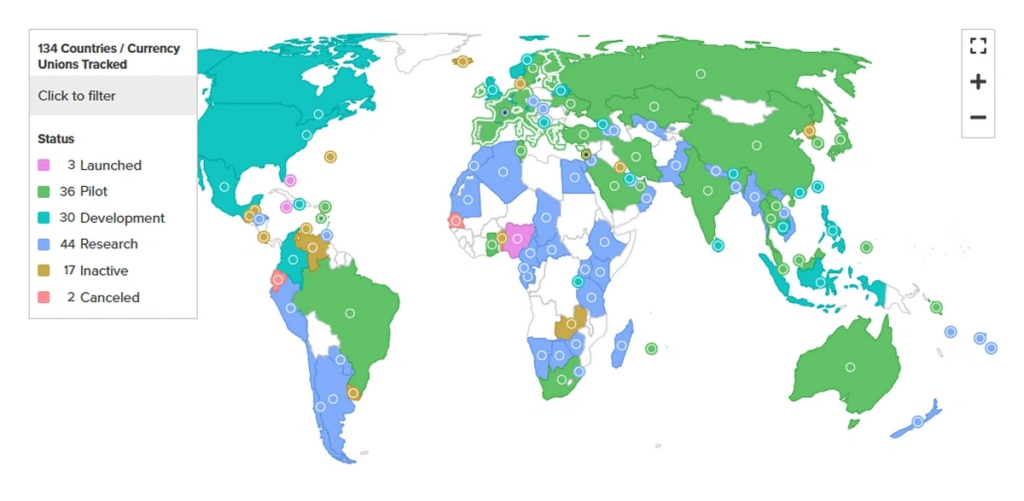As the mid-year rounds up, it’s time to drop major highlights of the past 6 months of crypto trends.
As we stand now, the cryptocurrency market boasts a formidable $2.66 trillion market cap, inching close to its 2021 peak.
This report delves into the key crypto trends propelling the current bull market, the regulatory landscapes that could impact it, and the environmental concerns surrounding the industry. Let’s explore the crypto trends defining 2024 and those poised to shape 2025 and beyond.
Bull Market Surges with ETF Approval
The most eye-catching development is the approval of Bitcoin spot ETFs. The value of Bitcoin skyrocketed by 150% as we entered 2024. Starting the year at around $44,000, Bitcoin had surged to nearly $70,000 by late May. Experts predict it could hit $77,000 by the end of 2024 and $123,000 by the close of 2025.
Two primary catalysts are fueling this bull market: the approval of spot ETFs and the anticipated halving event. Although brokerages had been crafting Bitcoin ETFs since 2013, it wasn’t until January 2024 that the SEC greenlit the spot ETF. These ETFs, which hold actual Bitcoin bought by financial firms and offer shares to investors, have lowered the entry barriers for retail investors and wealth management advisors alike.

BlackRock and Fidelity have emerged as dominant players, with BlackRock holding $15 billion in Bitcoin assets and Fidelity $9 billion. The upcoming halving event, which occurs approximately every four years, further drives demand by cutting the Bitcoin mining reward in half, reducing new Bitcoin supply.
The Intersection of AI and Crypto
Artificial Intelligence (AI) is making significant inroads into the cryptocurrency sector, giving rise to AI tokens—cryptocurrencies tied to AI ventures. These tokens play various roles, from paying for services to providing governance rights.

The market value of AI tokens has ballooned from $2.7 billion in April 2023 to over $39 billion today. Fetch.ai, a notable AI token, saw a 329% increase in value between February and March 2024. The platform’s March merger with SingularityNET and Ocean Protocol to create ASI (Artificial Superintelligence) further spotlighted AI’s growing influence in crypto.
Crypto and Environmental Concerns
Cryptocurrency’s environmental impact remains a critical issue. The energy-intensive proof-of-work (PoW) process used in Bitcoin mining demands vast amounts of electricity and water. The Cambridge Bitcoin Electricity Consumption Index reports that Bitcoin mining consumes about 1174 TWh of electricity annually, more than the total usage of the Netherlands. Additionally, 67% of this energy comes from fossil fuels, raising significant carbon emission concerns.

In response, Ethereum’s 2022 “The Merge” software upgrade shifted its system to a proof-of-stake (PoS) model, cutting energy use by 99%. However, Bitcoin is unlikely to adopt PoS, continuing to pose environmental challenges.
Real-World Assets Turn Digital with Blockchain
Asset tokenization, converting real-world assets into digital tokens on the blockchain, is gaining traction. This technology allows for fractional ownership, increased liquidity, and enhanced traceability. BlackRock’s 2024 launch of its first tokenized asset fund, BUIDL, on the Ethereum blockchain, and Citigroup’s experiments with asset tokenization on a private blockchain, reveal the financial sector’s interest.

Predictions show that the market for tokenized assets could grow from $2.81 billion in 2023 to $9.82 billion by 2030, with Boston Consulting Group suggesting it could even reach $16 trillion.
Increasing Regulation of Cryptocurrency and Exchanges
The collapse of major exchanges like FTX has put regulatory scrutiny on the crypto industry. As regulations tighten, the sector is expected to undergo significant transformations to enhance transparency and security. There’s also the ongoing lawsuit between the Nigerian government and Binance.

The Rise of Central Bank Digital Currencies (CBDCs)
Countries worldwide are exploring Central Bank Digital Currencies (CBDCs) to combine the benefits of crypto with the stability of traditional currency systems. With 132 countries, representing 98% of the global GDP, developing or testing CBDCs, the landscape is set for a major shift. Fully operational CBDCs already exist in Jamaica, Nigeria, and the Bahamas, with China conducting the largest trial with its digital yuan, e-CNY.

By 2030, the Bank of International Settlements predicts 15 retail and 9 wholesale CBDCs will be in use. SWIFT is preparing a network to facilitate cross-border CBDC transactions, maintaining the efficiency of the current banking infrastructure.

Here’s to anticipating more Crypto drama
The past months have been wild. With plummeting prices to fraud scandals and international fist-fights. And that’s just the tip of the iceberg.
Between Binance’s lawsuit, bitcoin’s struggle to get back on top, and the barrage of global crypto regulations, the second half of the year seems to promise more plot twists and drama, much to the delight of investors and enthusiasts alike.
So sit tight, and enjoy the wild crypto ride that the second half brings.
Visits: 5867

